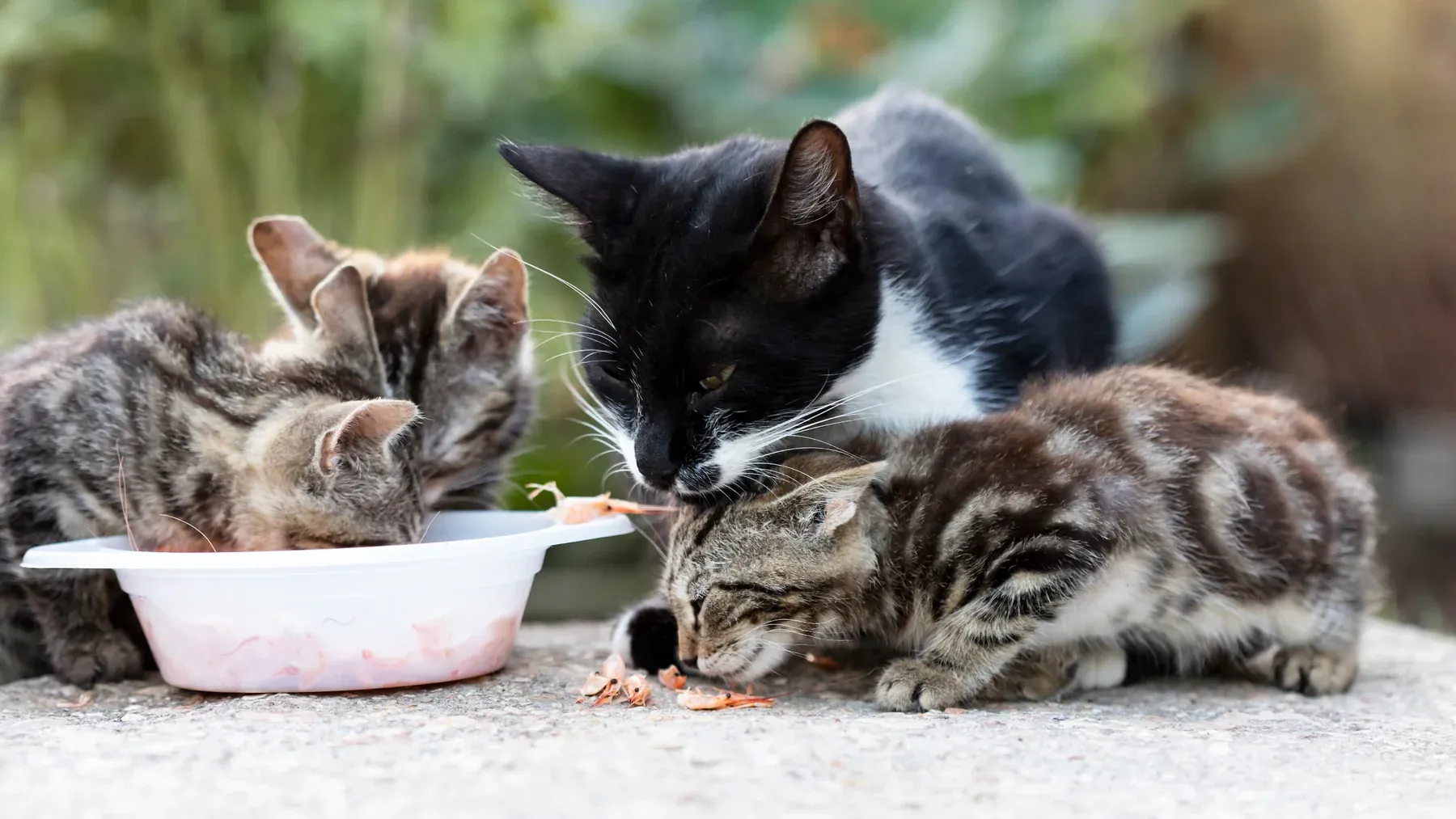Have you spotted a hungry stray cat and wondered what to feed it? Stray cats rely on kind-hearted people like you for survival, but not all human foods are safe. While sharing scraps might seem helpful, some can harm their health, while others provide essential nutrition. Proper feeding keeps stray cats healthy, energetic, and less prone to risks.
This guide covers the best foods for stray cats, key feeding tips, and common mistakes to avoid. Whether you’re new to helping feral cats or a seasoned caregiver, these insights ensure you’re making a positive impact. For more on specialized nutrition, check out homemade treats for cats with kidney disease.
Why Feeding Stray Cats Matters
Stray cats often scavenge for scraps, leading to malnutrition, weakened immunity, dull coats, and vulnerability to infections. Unlike domestic cats with scheduled meals, strays face inconsistent nutrition, making them susceptible to illness, especially in harsh weather.
A balanced diet boosts their energy, supports recovery, reduces risky scavenging, and builds trust with humans. Well-fed strays are more active and resilient, improving their quality of life and survival odds. Veterinarians emphasize that targeted nutrition mimics their natural carnivorous needs, rich in proteins and taurine.
How to Approach Stray Cats Safely
Before offering food, learn to approach feral cats correctly—they’re cautious and can sense threats. Observe their habits first: note resting spots or routines. Avoid established feeding areas to prevent territorial issues.
Place food in a quiet, safe location at the same time daily, then retreat. Cats won’t eat if watched, so give them space to adjust. Consistency builds familiarity; over days, they’ll associate you with positive experiences. Vets recommend slow introductions to minimize stress, drawing from feline behavior studies by organizations like the ASPCA.
Dos and Don’ts of Feeding Feral Cats
Safe Foods: What to Feed Stray Cats
 Dos of feeding feral cats
Dos of feeding feral cats
Focus on high-protein, plain options that meet cats’ obligate carnivore diet. These provide hydration, energy, and nutrients without seasonings.
Tuna
Tuna tops the list for stray cats—its strong scent attracts wary felines and draws them to a dedicated food bowl. Packed with protein, omega-3s, and minerals, it’s vet-recommended for initial feeding. Skip canned varieties with salt or oil; opt for cooked, fresh, or plain wet cat food like tuna in jelly (grain-free, no additives). Avoid for kittens, as it may upset digestion. Real-world experience: Many rescuers use it to transition strays to regular kibble.
Chicken and Beef
Boneless, cooked chicken or beef excels as a moisture-rich protein source, fulfilling taurine needs crucial for heart and eye health. High in amino acids, it’s ideal for hydration in summer. Enhance with plain boiled rice or unseasoned scrambled eggs for satiety. Commercial options like chicken in gravy wet food suit adults and kittens alike. According to the World Small Animal Veterinary Association (WSAVA), such meats align with feline nutritional guidelines.
Plain Rice or Sweet Potato
For digestive relief or fullness, offer plain cooked rice (fiber-rich carbs) or boiled sweet potato. These are gentle on upset stomachs and sustain energy. Always use fresh preparations—stale food risks bacterial growth. Limit to occasional supplements, prioritizing proteins.
Foods to Avoid: Common Mistakes
 Don’ts Of Feeding Feral Cats
Don’ts Of Feeding Feral Cats
Steer clear of items mismatched to cats’ biology to prevent illness.
Dog Food
Dog food lacks sufficient taurine and has higher carbs, risking heart disease in cats. Formulas differ by species—stick to cat-specific products.
Most Fruits and Vegetables
As carnivores, cats struggle with plant matter; tomatoes, potatoes, onions, garlic, grapes, and raisins cause GI upset or toxicity. Minimal cooked pumpkin or bananas are okay in emergencies, but prioritize meat.
Toxic Human Foods for Stray Cats
Many everyday items are dangerous: chocolate, coffee, alcohol (stimulants causing seizures), onions/garlic (anemia), grapes/raisins (kidney failure). Even small amounts disrupt digestion, leading to vomiting, diarrhea, or death. The Pet Poison Helpline reports thousands of cases yearly—keep these inaccessible.
Best Time to Feed Stray Cats
Cats digest slowly, so 1-2 meals daily suffice. Establish a routine—dawn or dusk works well—for predictability. Coordinate with neighbors for neighborhood strays to prevent overfeeding or waste. This fosters routine without attracting pests.
Extra Care: Feeding Stray Cats in Winter
Cold weather demands more calories for warmth. Add an extra meal of protein-rich foods like chicken or tuna, plus shelter. Wet and dry cat foods meet elevated needs, per AVMA guidelines on seasonal feline care.
Conclusion
Feeding stray cats thoughtfully transforms lives—simple acts provide nutrition, health, and hope. Prioritize safe proteins, avoid toxins, and maintain routines for thriving felines. Consult vets for personalized advice, and remember: anyone can be a cat parent through compassion.
Share your experiences or explore more cat care tips below!
Frequently Asked Questions (FAQs)
1. Is high-quality cat food essential for stray cats?
Yes—premium formulas deliver balanced nutrients, reducing malnutrition risks and supporting longevity, as endorsed by veterinary nutritionists.
2. How to meet nutritional needs when feeding strays?
Select “complete and balanced” labels with quality proteins like meat. Rotate wet/dry for variety.
3. What health issues arise from improper stray cat food?
Malnutrition, obesity, dental problems, digestive woes, taurine deficiency (blindness, heart issues), and urinary tract diseases.
4. Why mix wet and dry food for strays?
Wet food hydrates (prevents UTIs); dry adds convenience and dental benefits.
5. How often to feed stray cats?
Twice daily on a schedule ensures steady nutrition without excess.
6. How to feed community cats without pests?
Use enclosed feeders or timed dispensers to secure food.
7. Can stray cats eat homemade food?
Possible but risky—balancing taurine/proteins is tough. Commercial cat food is safer.
8. How does diet promote healthy stray cat lives?
High-quality food, clean stations, and water access build immunity and vitality.
9. Can stray cats eat roti?
Occasional plain bits won’t harm, but it’s carb-heavy and lacks proteins/taurine. Use cat food instead.
10. Health risks of improper feeding?
Deficiencies cause heart/blindness issues, GI problems, skin disorders, and urinary blockages—stick to feline diets.
